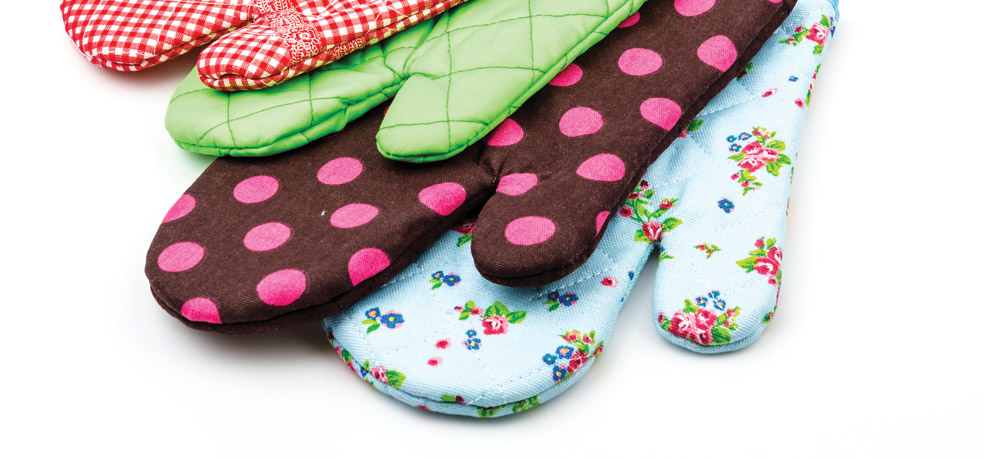Testing »
Textile Testing »
Oven Gloves

Oven Gloves
Overview
Domestic oven gloves should conform to BS 6526:1998 and the requirements apply to the following types of gloves:
- Gloves joined in pairs
- Single gloves
- Gloves with a thumb
The requirements are designed to ensure that the oven glove provides adequate heat protection to the hand and wrist area of the wearer. The British Standard also ensures that the performance of the oven glove is not detrimentally affected by washing and that the design does not restrict movement.
Test requirements
The following tests are performed after one wash and flat dry cycle using the procedure in the standard or alternatively following the care instructions supplied:
- Safe ironing temperature – Following the method described in BS 7305, the safe ironing temperature of the oven glove shall not be less than 220°C.
- Multi-layer construction oven gloves – A visual assessment of the oven glove is performed to ensure that the glove does not separate or deform and that the insulation does not become uneven.
- Thickness of material covering the back of the hand of non-reversible gloves is determined according to BS EN ISO 5084 and shall not be less than 1.5mm.
- Thermal insulation – a contact heat test is performed which utilises a brass cylinder heated to 150°C. The temperature rise on the glove after a test duration of 10 seconds should not exceed 30°C. Both sides of a reversible glove are tested.
- Dimensions – Minimum dimensions are provided for each of the three types of oven glove. Manufacturers and suppliers of gloves can perform basic checks on their products prior to submitting samples for test although it is important to note that some shrinkage is likely to occur during the washing / drying process.
- Marking – The gloves have to be permanently marked in accordance with this part of the British Standard.
For further information, please contact our Technical Customer Service team at onestopshop@bttg.co.uk / +44 (0)161 876 4211.
